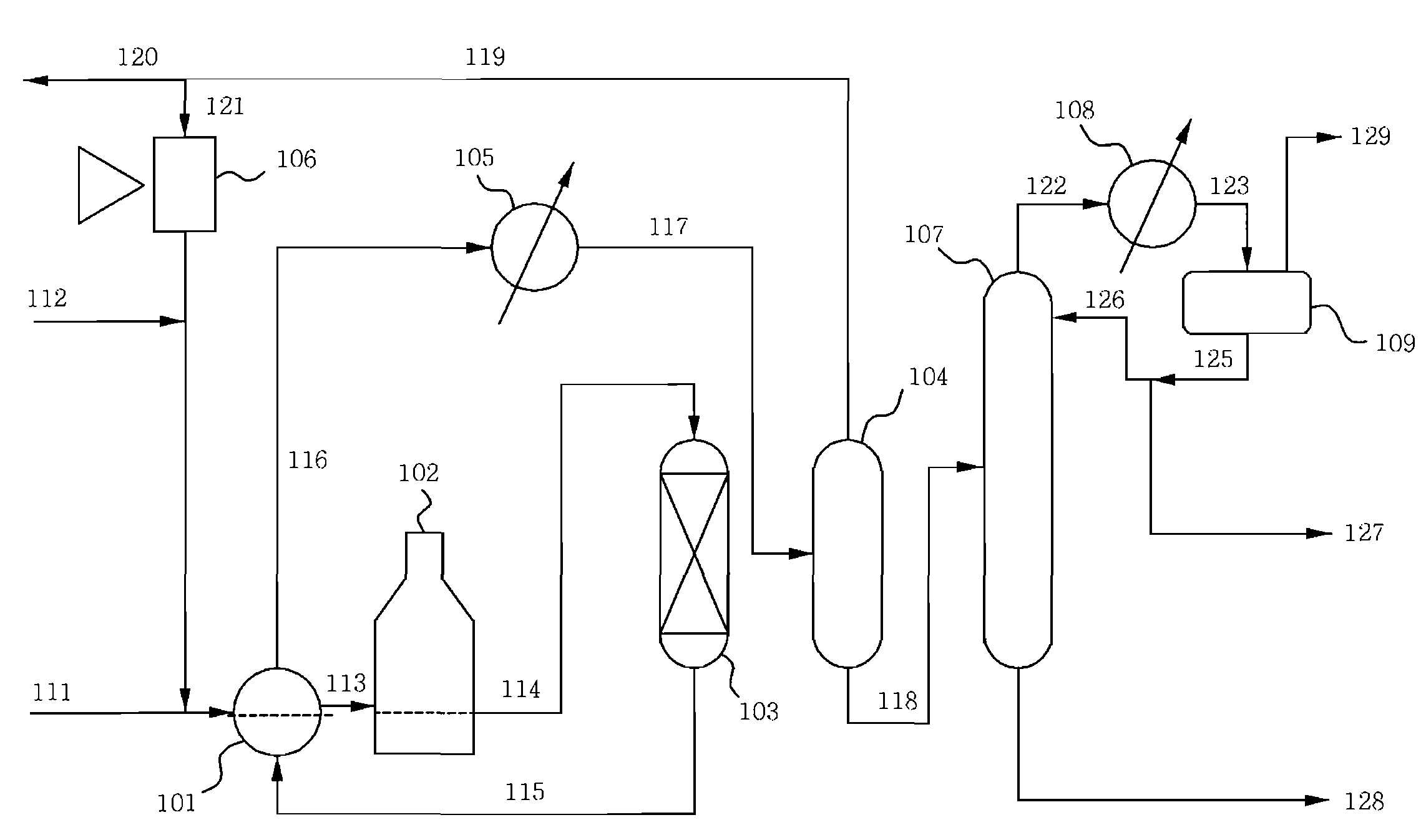Process of preparing aromatic hydrocarbons and liquefied petroleum gas from hydrocarbon mixture
a technology of aromatic hydrocarbons and petroleum gas, which is applied in the direction of hydrocarbon oil cracking, hydrocarbon oil treatment products, organic chemistry, etc., can solve the problems of shortening the catalyst life, not yet being applied as an independent process, and many restrictions in the commercial application of the above concep
- Summary
- Abstract
- Description
- Claims
- Application Information
AI Technical Summary
Benefits of technology
Problems solved by technology
Method used
Image
Examples
example 1
[0067]A mixture support, comprising ZSM-5 zeolite having a molar ratio of silica / alumina of 30 and γ-alumina as a binder, was mixed with an aqueous solution of H2PtCl6 and an aqueous solution of Bi(NO3)3 such that the amount of ZSM-5 zeolite in the support with the exception of platinum and bismuth was 75 wt %. Platinum and bismuth were supported in amounts of 0.03 parts by weight and 0.5 parts by weight, respectively, relative to 100 parts by weight as the total amounts of ZSM-5 zeolite and the binder. The mixture support thus supported was molded to have a diameter of 2 mm and a length of 10 mm, dried at 120° C. for 3 hours, and then calcined at 500° C. for 3 hours, thus preparing a catalyst. Using the catalyst thus prepared, a hydrocarbon mixture was reacted. The reaction conditions and the reaction results are given in Table 1 below.
example 2
[0068]A mixture support, comprising ZSM-5 zeolite having a molar ratio of silica / alumina of 30 and γ-alumina as a binder, was mixed with an aqueous solution of H2PtCl6 and an aqueous solution of BiCl3 such that the amount of ZSM-5 zeolite in the support with the exception of platinum and bismuth was 75 wt %. Platinum and bismuth were supported in amounts of 0.03 parts by weight and 0.25 parts by weight, respectively, relative to 100 parts by weight as the total amounts of ZSM-5 zeolite and the binder. The mixture support thus supported was molded to have a diameter of 2 mm and a length of 10 mm, dried at 120° C. for 3 hours, and then calcined at 500° C. for 3 hours, thus preparing a catalyst. Using the catalyst thus prepared, a hydrocarbon mixture was reacted. The reaction conditions and the reaction results are given in Table 1 below.
example 3
[0069]A mixture support, comprising ZSM-5 zeolite having a molar ratio of silica / alumina of 30, mordenite having a molar ratio of silica / alumina of 20 and γ-alumina as a binder, was mixed with an aqueous solution of H2PtCl6 and an aqueous solution of BiCl3 such that the amounts of ZSM-5 zeolite and mordenite in the support with the exception of platinum and bismuth were 50 wt % and 25 wt %, respectively. Platinum and bismuth were supported in amounts of 0.03 parts by weight and 0.25 parts by weight, respectively, relative to 100 parts by weight as the total amounts of ZSM-5 zeolite, mordenite and the binder. The mixture support thus supported was molded to have a diameter of 2 mm and a length of 10 mm, dried at 120° C. for 3 hours, and then calcined at 500° C. for 3 hours, thus preparing a catalyst. Using the catalyst thus prepared, a hydrocarbon mixture was reacted. The reaction conditions and the reaction results are given in Table 1 below.
PUM
| Property | Measurement | Unit |
|---|---|---|
| molar ratio | aaaaa | aaaaa |
| pressure | aaaaa | aaaaa |
| specific surface area | aaaaa | aaaaa |
Abstract
Description
Claims
Application Information
 Login to View More
Login to View More - R&D
- Intellectual Property
- Life Sciences
- Materials
- Tech Scout
- Unparalleled Data Quality
- Higher Quality Content
- 60% Fewer Hallucinations
Browse by: Latest US Patents, China's latest patents, Technical Efficacy Thesaurus, Application Domain, Technology Topic, Popular Technical Reports.
© 2025 PatSnap. All rights reserved.Legal|Privacy policy|Modern Slavery Act Transparency Statement|Sitemap|About US| Contact US: help@patsnap.com


